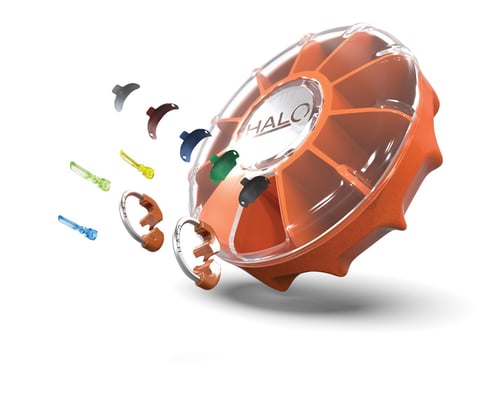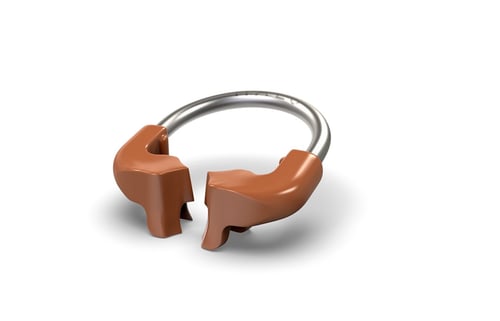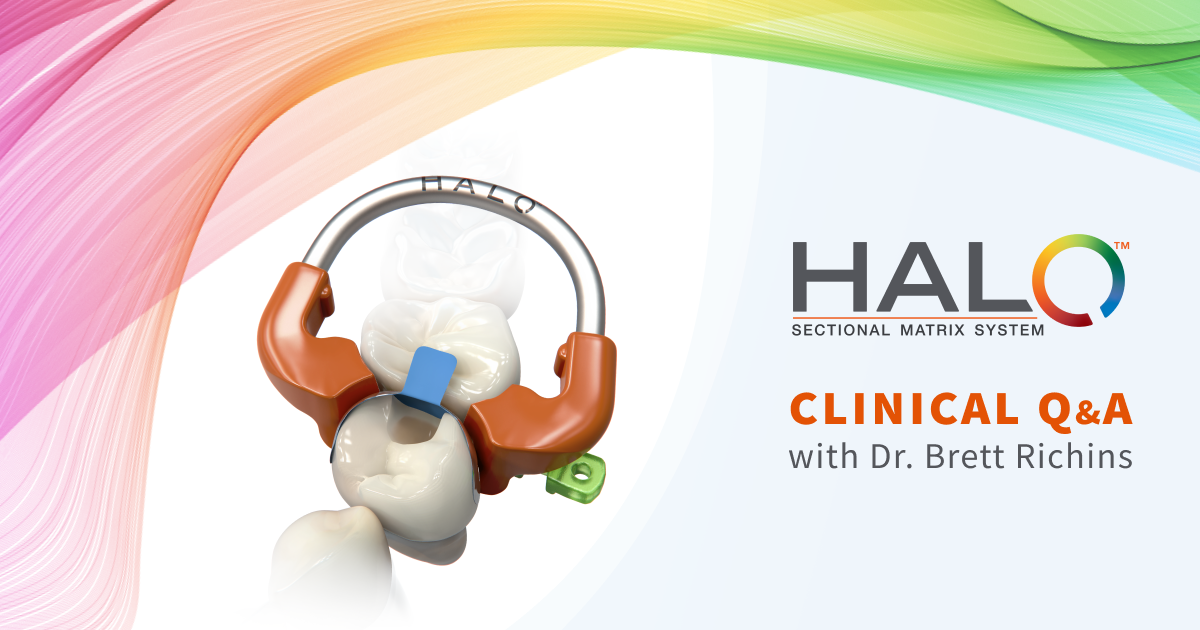A quality matrix system is necessary for a large percentage of restorative cases, yet many fail to deliver elements clinicians need for the quality of work they want to provide. In creating the Halo™ matrix system, developers identified areas where many of these systems are lacking and rectified them in ways dentists appreciate—with rings lasting more than 1000 uses, the Halo matrix system is a high-quality, long-lasting system for high-quality, long-lasting restorations.
I sat down with Dr. Brett Richins, DDS, to explore some of the features he’s encountered.
How do you feel about the separation that is achieved using the Halo system? What benefits do you get from this?
When using the Halo system, one of the biggest advantages is the fact that you get separation of the teeth from the ring design and from the wedge. The Halo™ wedge is firm enough to offer active wedging and separation while still being kind to the soft tissue. The ring is designed to fit precisely and apply enough force to separate the teeth. These two components work together to provide consistently tight contacts.
How do the Halo™ bands help you achieve ideal restorations?
The bands are designed to mimic the natural anatomy of teeth. This helps achieve consistent contacts and anatomically accurate embrasure spaces. The anatomy in the bands is so ideal that I avoid burnishing when possible to allow the band to aid in achieving ideal anatomy.
What benefits do you get from the anatomically accurate design of the ring and band curvature?
The bands are designed to have anatomically correct contours, once the Halo™ ring is placed, they work together to create anatomically accurate restorations. I find this reduces the amount of finishing required by 50% or more. My restorations have never looked so good immediately after removal of the band.
How do you find these wedges to be different than other wedges you have used?
As mentioned previously, the number one difference is the active wedging. This means that the wedges not only tightly adapt the matrix band but they also aid in separation of the teeth. The hollow center of the wedge makes them kind to the papilla and allows them to be stacked when necessary.
What has your experience been with the Halo™ carousel?
The carousel is one of my favorite parts of the Halo system. It provides an efficient, compact, and sleek solution to storage. It takes up less space than other storage solutions I’ve used, but still has plenty of room for everything you need. The best part is that I don’t stress about the bands and wedges spilling out if the carousel is tipped over or dropped. It’s one of those things that you don’t realize you need it until you have it, then you don’t want to work without it. What are some of the benefits you’ve found to using a universal ring with such a variety of uses?
What are some of the benefits you’ve found to using a universal ring with such a variety of uses?
The universal ring has a precise anatomical fit that works for molars and premolars. The simplicity of having a universal ring takes the guess work out of which ring to use.
How does the longevity of the ring stack up to expectations? How many uses/sterilization cycles do you find yourself using a ring for?
The longevity of the Halo ring can be attributed to two factors: its ability to continue performing as intended for up to 1000 cycles and the fact that it is designed with smooth, easy-to-clean surfaces. Rings I have used in the past will build up bond and composite to the point where they are unusable long before they should have been.
Describe the benefits of a NiTi ring.
The NiTi ring provides consistent, reliable forces for separation as opposed to other materials that will apply adequate forces when first placed but lose their force within the first minute or two.
What are some different use-cases for the various band types (Original, Firm, Nonstick)?
The choice of band will depend both on clinician preference and the specific case. All three bands are ultra-thin and are made of the same material. The Original bands are fully annealed, dead-soft bands making them easy to adapt to the adjacent tooth and achieve consistently ideal contacts. The Firm and the Nonstick are both quarter-hard which makes them more firm. For me, the firmer bands are great for smaller preps or situations with tight interproximal spaces. The Nonstick bands are color-coded which makes them easily identifiable.
Are the rings stackable?
Yes, both the design and the size of the ring allow them to be easily stacked.
About the Author

After earning his bachelor’s degree in Biomedical Engineering from the University of Utah in 2008, Dr. Richins received his doctorate from the University of Pittsburgh School of Dental Medicine in 2012. He is a member of the Academy of General Dentistry, the American Dental Association, the Utah Dental Association, and the Academy of LDS Dentists.
He continues to pursue his education and frequently attends advanced courses that cover topics such as Endodontics, Implantology, Cosmetic Dentistry, Oral Pathology, TMJ, Sleep Apnea, and much more. He has also done humanitarian dentistry in underserved areas of Jamaica, Vanuatu, and Appalachia.
In addition to practicing dentistry, Dr. Richins spends one day a week working as a Clinical Advisor for Ultradent Products. Ultradent has been developing and manufacturing the highest quality dental products for over 40 years. Dr. Richins’s role at Ultradent allows him to be involved in testing and developing the latest dental products.







